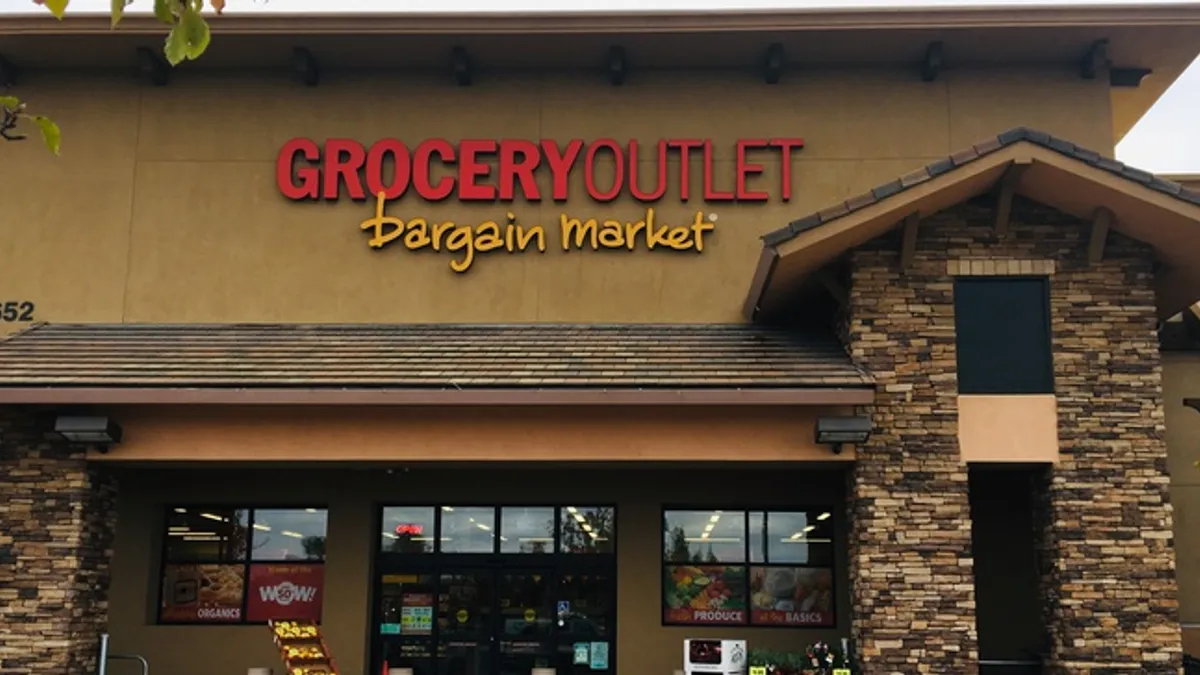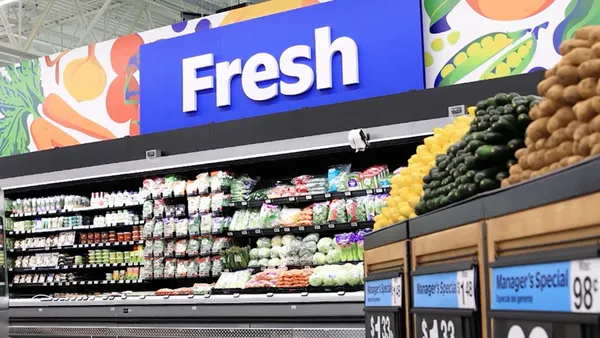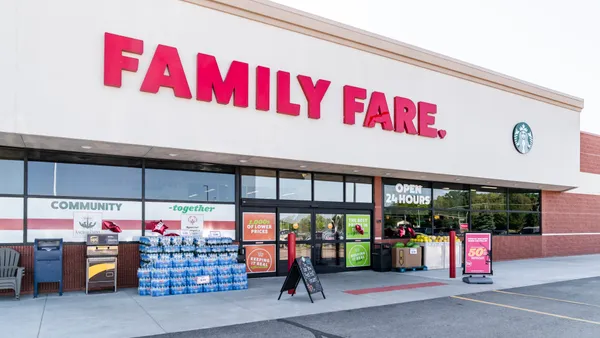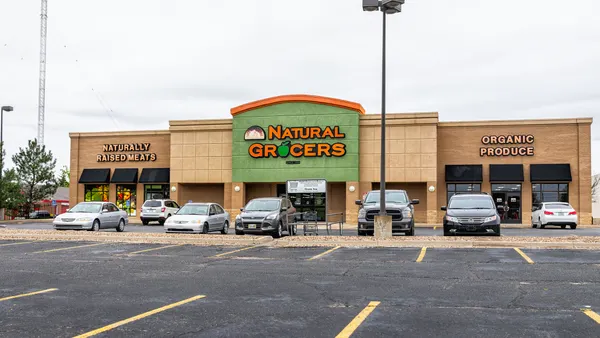Dive Brief:
- Grocery Outlet anticipates a more favorable operating environment this year as it leverages inflation and supply chain disruptions to its advantage, executives said during an earnings call on Tuesday detailing its fourth-quarter results.
- The discount grocer is leaning into digital initiatives to help drive spending growth, executives said. Its e-commerce partnership with Instacart, which started last summer and currently covers 68 stores in California, will roll out across the entire fleet by the end of the second quarter. Grocery Outlet will also begin piloting a loyalty app this summer, executives said.
- One-stop shopping behaviors tamped down the company's growth last year, but store traffic turned positive in this year's first quarter as shoppers look to the discount chain amid rising inflation, Chief Financial Officer Charles Bracher said during Tuesday's earnings call.
Dive Insight:
Inflation and supply chain disruptions have caused major headaches for grocers and consumers, but Grocery Outlet sees those as benefits due to its opportunistic buying model and reputation for low prices.
"In an inflationary environment, the incredible savings we offer customers become even more important, providing an opportunity to both increase our share of wallet as well as reaching customers," CEO Eric Lindberg told investors on Tuesday.
Supply chain disruptions that have rattled grocers, meanwhile, have resulted in order cancellations that Grocery Outlet has jumped on. For example, the chain snapped up 22 shipping containers of holiday butter cookies and offered them at an 85% savings compared to competitors' prices, President RJ Sheedy said.
"We expect high levels of supply chain disruption to continue," Sheedy said, noting Grocery Outlet is looking to help suppliers overcome inventory challenges and leverage its "strong" supplier relationships. The company has increased its opportunistic buying and, in some cases, grew purchases by 50%, Sheedy said.
During much of the pandemic, shoppers turned to supermarkets and mass merchants due to their ability to fulfill one-stop shopping trips. But with research now showing concerns over inflation outstrip those stemming from the coronavirus, customers with tighter wallets are responding to Grocery Outlet's "extreme value model" and, as a result, sales are improving, Lindberg said.
During the company's fourth financial quarter, which ended on Jan. 1, net sales decreased 3% to $782.7 million compared to the same period a year ago, while comparable store sales on a 13-week basis decreased by 1.2%, lapping a 7.9% increase for the same period last year. The comp sales decline was due to lower store traffic, which was partially offset by higher ticket sales, said Bracher.
For the full fiscal year, net sales decreased by 1.8% on a one-year stack to $3.08 billion.
The discount grocer has been focused on expanding its assortment, adding 275 new SKUs last year, and with plans to add 300 more this year. Areas of increased focus for products include ethnic, local and NOSH — its natural, high quality and health-based items.
On the e-commerce side, executives said they are pleased with the results so far of the pilot with Instacart, noting the partnership has allowed them to tap into new customers and drive larger baskets.
"Execution in our first few months has been very smooth and feedback from our operators have been positive ... and customer satisfaction scores are high," Sheedy said about the Instacart pilot.
The loyalty app, which is expected to start testing this summer, will give shoppers real-time item visibility, allow them to opt in to early access to popular events and provide alerts on when favorite brands and products have become available, Sheedy said. The chain is looking to deepen shopper loyalty with the app while also gaining data on shopper behavior.
Grocery Outlet opened 36 new stores and closed one in 2021 and is planning to open approximately 28 new stores this year. Most of the new stores planned will open in the back half of the year as Grocery Outlet weathers near-term challenges including labor and material shortages.
"We believe these challenges are largely temporary and we remain committed to resuming our 10% unit growth in 2023," Lindberg said.















